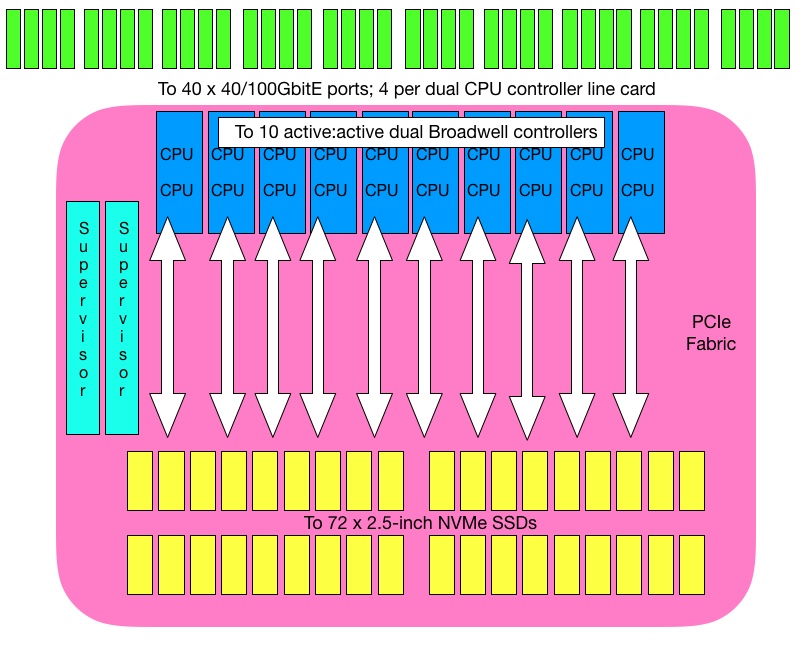
Pavilion Data, the high-end array vendor, has released a speedy parallel file system that brings it into direct competition with major HPC storage players for the first time.
The new capability, modestly called HyperParallel File System, means that Pavilion now provides probably the fastest unified file, block and object storage array in the industry. In fact, the startup claims this system is the most performant, dense, scalable, and flexible storage platform in the universe.

Customers can accelerate all workloads, such as AI/ML, Analytics, HPC, and at the Edge, according Gurpreet Singh, Pavilion Data CEO. “With our announcement today,” he said, “customers are able to … process massive amounts of unstructured file and object data, without limits and at unprecedented speeds to extract the most value out of their critical assets.”
The superlatives keep coming. Marc Staimer, President of Dragon Slayer Consulting, said in a statement, “Pavilion has been able to achieve industry leading performance for simultaneous block, file, and object workloads, at scale, while using standards based hardware in an incredibly compact form factor. This is truly impressive. What’s even more amazing, it is the first in the industry.”
Just one more, from Eric Burgener, research VP for the Infrastructure Systems, Platforms and Technologies Group at IDC. “The system efficiently delivers extremely high performance and low latency, predictably at scale, providing a highly efficient end-to-end NVMe-based platform suitable for high performance cloud native as well as traditional workloads that significantly outperforms the competition, with in many cases a 50 per cent to 75 per cent smaller footprint.”
The set-up
Pavilion Data’s 4RU HyperParallel Flash Array (HFA) has up to 20 controllers linked across NVMe to up to 72 SSDs, with NVMe-oF external access. The company’s HyperOS 3.0, released today, has added the HyperParallel File System with multi-chassis, global namespace support for NFS and S3, enabling linear scaling across an unlimited number of clustered HyperParallel Flash Array systems.

A single HFA delivers 120 GB/sec throughput, 25µs of latency, and 2.2 PB of storage in its 4R form factor. At rack level It can provide 20.2PB of capacity, 1.2 TB/sec read, 900 GB/sec write bandwidth, and 200 million IOPS at the same 25µs latency.
Pavilion says this is up to 4x the read performance and up to 8x the write performance for NFS and S3 data versus the incumbent and new players in this space. We take incumbents to mean Dell, HPE, NetApp and Pure, and new players to include Qumulo, StorOne, WekaIO and VAST Data
Pavilion arrays support iSCSI, NVMe-oF/TCP, NVMe-oF/RoCE, NFS, and S3. They can also link to an external file system such as IBM Spectrum Scale, Lustre, or BeeGFS. A single HFA supports up to 20 controllers and 40 100Gbit/s Ethernet or InfiniBand ports.
NFS data services include tiering, replication, security, snapshots, clones, encryption, and compression. S3 data services include compression, replication, file access controls, identity management, multi-cloud tiering, and multi-ecosystem integration.
Money talk
Singh said in a video press briefing that Pavilion’s Q3 was a blockbuster quarter, with nearly 10x revenue growth y/y, and equivalent to Pavilion’s entire 2019 revenues. Recent wins include PayPal and Cisco.







